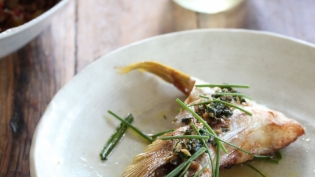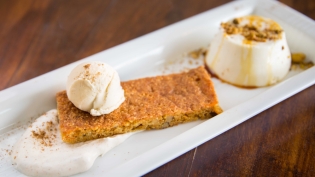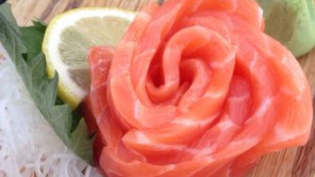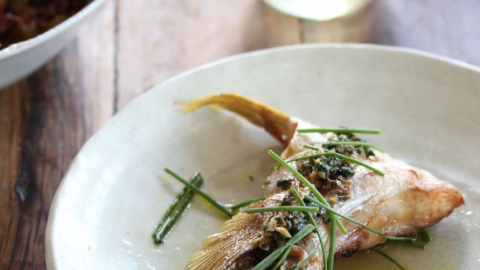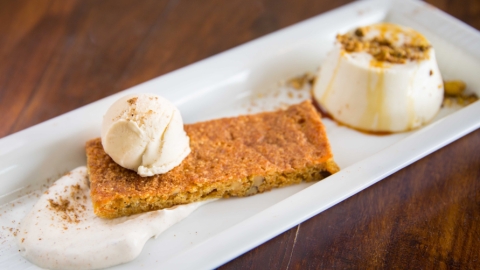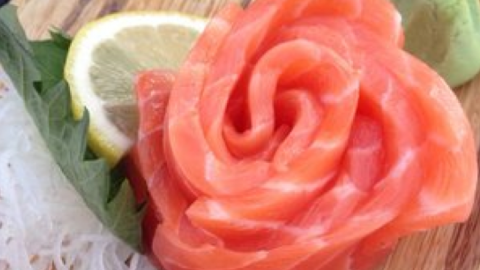The Mind of a Chef
Wednesday. 5pm. I stare into the refrigerator. What to make for dinner?
The door shelves are lined with condiment jars from just about every country on the planet. My refrigerator is stocked with food—a remnant of life in New York City, where you had to be prepared for hurricanes or snowstorms that might close the supermarkets. And yet, despite the abundance of food staring back at me, my mind is blank.
I think “tuna salad sandwich.” Boring. Mundane. Unimaginative. With all those condiments, I should be able to come up with something more exciting than tuna and mayo.
I’m a good cook. In fact, I’m a great cook. But I’m not a creative cook. I see chicken and I think “roasted chicken.” I see shrimp and I think “shrimp tacos.” I see tuna and I think “tuna salad sandwich.”
There’s nothing wrong with those dishes. Trust me: If I prepared them, they’d be cooked well because I’m a technician with outstanding skills, but I lack the creative mind of a chef.
A while back there was a cooking show starring Curtis Stone. The premise was to ambush an unsuspecting supermarket shopper and offer to cook dinner with whatever she had in her shopping cart and refrigerator. I’m sure it was a setup, but let’s suspend reality for a minute and make believe it was real. Chef Curtis would just take out stuff from her fridge and prepare a gourmet meal for the family using whatever was in there. I have to say that I marveled at his resourcefulness and at a mind that can transform a can of tuna into something other than a tuna salad sandwich.
A few of our Valley chefs have that same resourcefulness and are known for their ingenious use of ingredients, creating dishes that are not just new but appealing to all the senses. How do they do it?
According to Chef Instructor Glenn Humphrey from Arizona Culinary Institute, “Cutting-edge chefs have a more developed palate because they are willing and eager to try new foods that many others would not.”
Chef Bernie Kantak at Citizen Public House and The Gladly is someone who doesn’t shy away from ingredients that many would consider out of the ordinary, if not downright strange.
“A supplier asked me if I’d ever had pork temple. I hadn’t but I was willing to give it a go. I worked up a dish that will be on the menu at The Gladly soon.”
How did Chef Kantak come up with the concept for the pork temple?
“My grandfather was a German butcher. I get a lot of ideas from the foods I ate growing up.” This preparation for the pork temple is one of those ideas that originated with food the chef had eaten as a child.
Early culinary influences are often the impetus for experimentation. For Chef Cullen of Crudo, who grew up in Memphis, there is a strong influence of barbecue in his food even though his food is not typical barbecue.
“I treat a lot of our entrees as barbecue. I slow-cook them with wood so they have a smoky flavor.” It’s not about rubs or barbecue sauce but about technique.
Maybe fiddling around with pork temple or smoking fish isn’t that out of the ordinary, but what about adding garlic to ice cream?
Chef Tracy Dempsey of Tracy Dempsey Originals is known for her cutting-edge dessert flavors. Chef Dempsey used to work with Chef Kantak at a Scottsdale restaurant. He once challenged her to come up with a dessert using pickled garlic. Pickled garlic!
When I asked Chef Kantak to tell me about a memorable dish that he’d eaten, he brought up that dessert from many years ago! Dempsey was flattered to know that her efforts, all these years later, had made an indelible and favorable impression on his palate.
Dempsey’s use of savory ingredients in desserts may sound odd to the reader but she manages to make them taste like they belong in sweet preparations. Chef Dempsey explains that she spent years working the line with savory ingredients before she became a pastry chef. After all those years working with those ingredients, it just seemed natural to incorporate the flavors into desserts.
For Chef Lori Hashimoto of Hana Japanese Eatery, home kitchen innovations usually start with something she misses.
“I had a friend in college who made a tomato, cucumber, onion salad. When heirloom tomatoes came into season, I found myself in the kitchen making one heirloom tomato salad after another.”
Chef Hashimoto traveled with her mother, a formally trained chef, to Japan recently. They ate at both traditional and modern Japanese restaurants, some that her mother had eaten at when she lived there many years ago.
“When we came back, I wanted to cook everything I’d tasted but I think I need to spend more time there to really get the hang of it.”
Chef Hashimoto likes to work with a small group of ingredients. “I like to ‘feel’ them out by taste, smell and texture and then I combine them one at a time. I don’t care for dishes with too much complexity. It’s just not my style. In my mind, less is better and plating is always done in the standard Japanese tradition.”
Of course, all these innovative chefs have had failures in conceptualizing a dish. Sometimes the failure never gets past the kitchen. Other times, the dish ends up on the menu but is quickly rejected by the diners.
Chef Cullen had received a delivery of sweet corn from a local farmer. Cullen ground the corn to make what he called a “fresh corn polenta.” Diners either didn’t understand what he meant by “fresh” or they just didn’t like the dish. Cullen thought he had a winner but the diners did not agree.
I’m not sure I know why the diners didn’t like the fresh corn polenta but I do have an idea why diners might have rejected Chef Kantak’s paprika-cured pork belly with sarga turo. What’s sarga turo? A Hungarian egg cheese (egg cheese?) flavored with cinnamon and nutmeg. Perhaps the bizarreness factor had something to do with it? Sometimes the description is just too far out of the diner’s experience.
Chef Dempsey’s ofttimes failed dessert offering is panna cotta. Dempsey says she has a good feel for her clientele at each restaurant and tries to cook for them. But she finds that panna cotta is frequently not a popular dessert. It’s possible that the diner expects a custard-like dessert but is served what Dempsey calls “milk jello” instead and the incongruity of their expectation and the reality just doesn’t work. She muses that perhaps the wait staff should describe the dessert as “milk jello.” Doesn’t sound too appetizing but it certainly is an apt descriptor.
“I’ve had so many failures,” says Chef Hashimoto,” that I’ve lost count. Let’s just say that heavy cream and dashi do not work well together.”
Each of the chefs has ingredients they’re excited to try. Chef Kantak is dreaming of yak meat. He hasn’t even tried it himself yet but he intends to. “Look for it on the menu sometime soon,” he declared.
Chef Hashimoto tried many unusual foods when she was in Japan. Among them were sea vegetables, some of which she didn’t like much. One in particular, sea pineapple, she’d like to experiment with because she loves a challenge.
Hashimoto’s and Kantak’s dream ingredients are tame compared to Chef Cullen’s. He’s eager to try blowfish. He says the kind available from the East Coast of the United States is not poisonous like Japanese blowfish. Again, he’s never tasted it, but that’s why he’s interested in it. He’s already got some ideas about how to cook it. Now he just has to find a supplier.
All the chefs agree on one thing: They don’t think of themselves as innovative or cutting edge. Their aim is to make us, the diners, happy. If along the way they incorporate unusual ingredients or discover novel preparations, so be it.
Those of us who have had the privilege to travel to other regions in the United States, or even other countries, have no doubt had opportunities to taste novel preparations of ingredients that might be familiar or unfamiliar to us. We should be just as open to trying novel foods presented by our local chefs.
Some of us are technicians. Some of us are innovators. Thankfully we have plenty of creative chefs in the Valley who think beyond a tuna salad sandwich.





